Basic knowledge of standard fasteners (3)
Part Three: Small Screws
Chapter 1 Product Classification
1、 Product categories:
(1) Tapping screws
1. Reference standards: The British self tapping nail reference standard is ANSI/ASME B18.6.4, while the metric reference standards include GB845 (R+), GB846 (F+), GB847 (O+), JIS B1115 (-), JISB1122 (+), JISB 1126 (HW), JISB1127 (HF), JIS B1125, DIN7971, DIN7972, DIN7973, DIN7981, DIN7982, DIN7983, ISO1479 (H), ISO1481 (B -), ISO1482 (F -), ISO1483 (O -), ISO7049 (P+), ISO7050 (F+), ISO7051 (O).+).
2. Head types: There are three types of head types in both the new and old national standards: round head (R), countersunk head (F), and semi countersunk head (O) in the old national standard, and pan head (P), countersunk head (F), and semi countersunk head (O) in the new national standard. There are various head types for British self tapping nails. The common types of self tapping nail heads currently available are as follows:
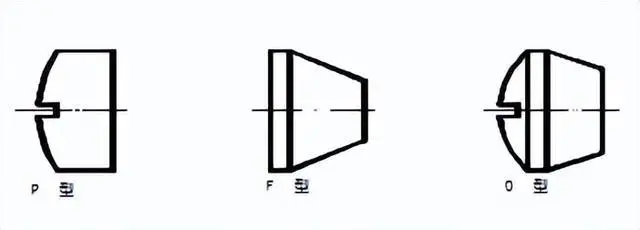
3. Dental types: Currently, self tapping nail dental types include A, AB, B, BT, BP/BF, C, D, T and other dental types, as shown in the figure. View: U S. A. Fastener standard (original version) page 13.
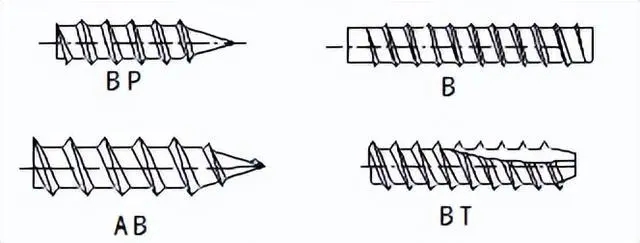
4. The difference between AB teeth and A teeth:
① The new version of IFI standards has eliminated A-site products, but due to market demand, some companies are also producing A-site products. The main difference between A teeth and AB teeth products is their number of teeth, as shown in Table 1.
② The outer diameter and root diameter of teeth A and AB are also different (as shown in Table 2).
③ The head dimensions of the 14 # A tooth and AB tooth products are different (as shown in Table 3), while the basic dimensions of other specifications are the same.
Table 1

Table 2

Table 3

5. Length and tooth length:
(1) Length specification: The self tapping screws currently produced by our company are all full teeth, (when customers have requirements, according to their specified standards)
(2) Measurement of length: For countersunk and semi countersunk screws, the length should be measured from the end to the top surface.
(3) Allowable tolerance for length:
① The allowable tolerance for AB teeth and BP teeth is ± 0.03in when the length is less than or equal to 1 inch, and ± 0.05in when it is greater than 1 inch.
② The allowable tolerance for the length of teeth B, BT, C, and T is -0.03in for lengths greater than 3/4 inch, -0.05in for lengths greater than 3/4 inch to 1-1/2 inch, and -0.06in for lengths greater than 1-1/2 inch.
(4) Regulations on tooth length:
Requirements for AB, B, BP, and BT teeth: The complete thread should be machined as close as possible to the head, and at the distance Y below the head, the thread diameter size should be ensured to be within the specified limit, as shown in the table below.
② If the nominal length is greater than the listed products, the minimum complete thread length should not be less than the LT specified in the table below.
Table 4 Thread lengths of AB, B, BF, BP, and BT self tapping screws
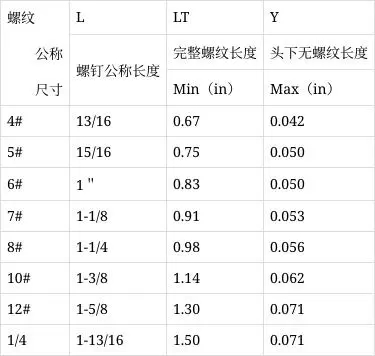
(2) Wall panel nails
1. Reference standards: JIS B 1125, GB/T 14210-93C, and customer specified standards.
2. Head type: Currently, there are horn heads (DW) for wall panel nail heads, but there are also large flat heads (TW) and Huawei heads (AF).
3. Dental shape:
(1) There are two main types of wall panel nails: fine teeth and coarse teeth, and their tooth spacing and number are shown in the table below. Fine teeth are divided into two types: double tooth double out and double tooth single out, as well as high and low teeth, while coarse teeth are single tooth single out. Under normal circumstances, the tooth angle is 60O and the tail tip angle is 25O ± 3O, but some customers require a tooth angle of 45O ± 5O.
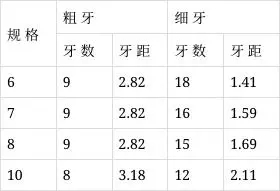
(2) Due to the requirement of attack speed for wall panel nails (fine teeth), and factors such as tail tip cracks, excessive tail tip, blunt tail, and tail tooth burning that may result in insufficient attack speed, the following table is specifically formulated for their attack speed:
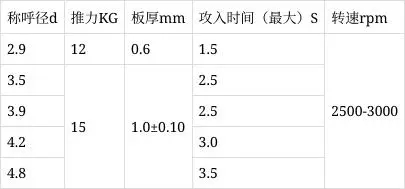
4. Length:
(1) For products with a length of 3/8 inch or more, the size tolerance is generally taken as the lower limit. Products with a length of less than 2 inches (50mm in metric) are referred to as full tooth (LT) products. The length of the tooth is 2 inches to 3 inches, and the tooth length is 2 inches; When it is 3 inches or more, the tooth length is 2-1/2. This customer has a special requirement that the tooth length should be 2/3 of the nominal length. That is, LT=2/3 × L.
(2) Products with a length of 4 inches or more (metric 100 mm) are prone to bending, so there is a requirement for runout. There are two forms of bending: one is caused by rolling the teeth, that is, bending from the first tooth, and the other is caused by heat treatment, that is, forming an arc as a whole.
(3) Drill tail screws
1. Reference standards: ANSI/ASME B18.6.4, DIN7504.
2. At present, the common types of drill tail screw heads include hexagonal head (HW), pan head (P), and flat head (F).
3. The main types of teeth are BD teeth and CD teeth, with the difference being that BD teeth have the AB tooth type of self tapping screws, while CD teeth have mechanical teeth.
4. Length: When the length is within 1-1/2 inches, it is called a full tooth, and when it is greater than 1-1/2 inches, it is called a half tooth. The tooth length is 1-1/2 inches.
5. Introduction to BSD and CSD screws:
(1) BSD type screws should have spaced threads and drill bit ends of different shapes. Drill bits are commonly used in sizes 2 or 3, and their design is suitable for different plate thickness conditions. When the nominal length is equal to or less than 1.50 inches, it is a full tooth screw, and the thread under the head, including the thread end, should be 1 pitch, and if possible, it should be smaller.
(2) The CSD type screw is a machine screw thread with a diameter pitch combination that approximates a uniform thread, as well as drill bit ends of different shapes marked as No. 2 or No. 3. Its design is suitable for different plate thickness conditions. The CSD type screw does not require thread measurement, but should meet the dimensions specified in the standard. Generally, in places where machine screw threads are more advantageous than spaced threads, CSD type screws are used. Screws with a nominal length of 1.50 inches or less should be full threaded, and the thread blank under the head, including the thread end, should be 1 pitch or less.
6. Selection of BSD and CSD screw clamp tail molds:
Under normal circumstances, for sizes below 6 # (inclusive), a 2 # tail is used; for sizes above 8 # (inclusive), a 3 # tail is used. When the length of size 8 # and 10 # is less than 1/2 (inclusive), or when the length of a flat head is less than 5/8 (inclusive), a 2 # tail is used. For sizes above 10 #, if the length exceeds this specification, a 3 # tail is used. The minimum length required for flat head BSD 2 and 3 # tails is:

7. Requirements for screw tapping speed
The main characteristic of drilling tail screws is drilling penetration. If the blade diameter is too small, the surface hardness is too low, and the clamping tail is poor, it may cause insufficient tapping speed. SAEJ78 and DIN7504 have made the following regulations on attack speed:
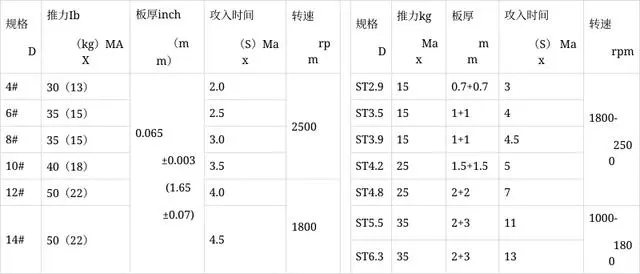
(4) Splint nail
1. Reference standard: Customer requirements
2. Head shape: Currently, the common types are flat head, pan head, and large flat head. The groove types are mostly rice shaped grooves, and there are also plum blossom grooves.
3. Tooth shape: The angle of the splints and teeth is 400, with one side being 250 and the other side being 150, giving the product a certain degree of self-locking function. The tail tip angle is 250 ± 30 or 340 ± 30. Generally, the tail tip angle for short sizes is 340 ± 30. The three splints and teeth should have a smooth tooth base and no iron filings. Due to the lack of smoothness, it is difficult to screw the product into hard wood, and there may also be breakage, which means that the screw in test may not meet the requirements. If there are iron filings present, they cannot be deposited onto the substrate during electroplating. When the screw is screwed into the wood, the iron filings fall off, making the substrate susceptible to corrosion and causing rusting of the product.
(5) Machine screws:
1. Reference standard:
(1) Metric system: GB65-85 (B -), GB67-85 (P -), GB68-85 (F -), GB69-85 (O -), GB818-85 (P+), GB819-85 (F+), GB820-85 (O+), DIN963-85 (F -), DIN964-85 (O+), DIN965-85 (F+), DIN966-85 (O+), JISB1111-96
(2) Imperial system: ANSI/ASME B18.6.3
2. Head type: Similar to self tapping screws, there are three types of head types in both the new and old national standards. The old standard has round head (R), countersunk head (F), and semi countersunk head (O), while the new standard has pan head (P), countersunk head, and semi countersunk head. Like British self tapping screws, there are several types of head types:
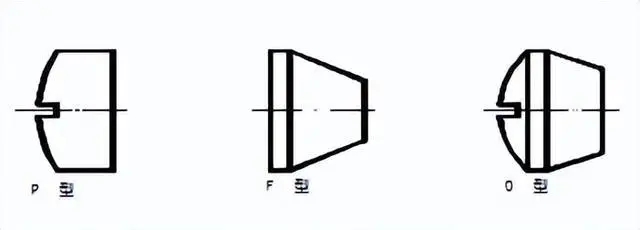
3. Tooth type: Machine screw tooth type refers to mechanical teeth, with tooth spacing listed in the following table:
(1) , metric system

(2) Imperial system:

4. Length: The machine screws produced by our company are currently full teeth.
2、 Product identification:
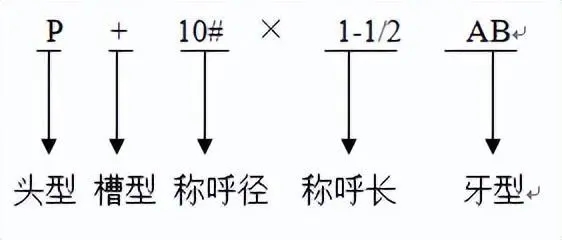

2 Comments